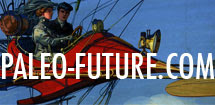
This Closer Than We Think strip about weather control appeared in the June 22, 1958 Chicago Tribune.
In years to come, there will be satellite equipment for forecasting - as well as controlling - the weather.
The effects of air and humidity masses can be calculated more precisely from above. Sunspots, solar rays and other space disturbances will be more easily observed and studied. And sensitive sighting and analysis devices will make long-range predictions highly accurate.
Control of weather is the next step. In the words of Dr. I. M. Levitt, Director of the Fels Planetarium at the Frankline Institute: "In time, huge solar mirrors five or more miles in diameter may be used to reflect radiation of the sun to specific areas on earth to increase evaporation and to prevent crop-killing frosts."
See also:
Foolproof Weatherman of 1989 (1939)
Communities May Be Weatherized (Edwardsville Intelligencer, 1952)
American Version of Postcards Showing the Year 2000 (circa 1900)
The Coming Ice Age (1982)
A Wonderful Day to Fly (1980)
Glenn T. Seaborg's 1989 (1964)
Lyndon B. Johnson on 2063 A.D. (1963)
Postcards Show the Year 2000 (circa 1900)
What May Happen in the Next Hundred Years (Ladies Home Journal, 1900)
Space Colony Possible (The News, 1975)
Solar Energy for Tomorrow's World (1980)






























